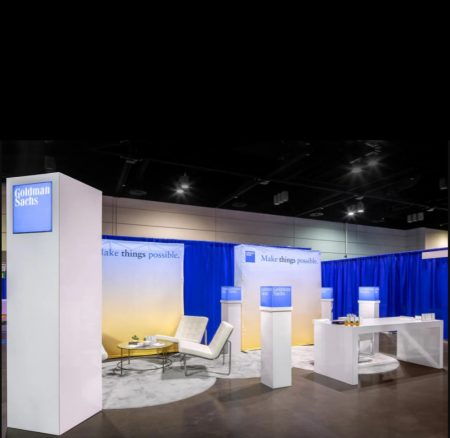 2021 has been a challenging year for a lot of industries, as it’s been difficult to predict the ever-changing Covid-19 mandates. This is especially true for trade shows and events. Many events that were scheduled early in the year were cancelled due to evolving Covid-19 restrictions, which caused an upsurge in demand once restraints were lifted. When cases began to decrease again, beginning in early August, the demand for live, in-person events and trade shows returned swiftly and without warning.
2021 has been a challenging year for a lot of industries, as it’s been difficult to predict the ever-changing Covid-19 mandates. This is especially true for trade shows and events. Many events that were scheduled early in the year were cancelled due to evolving Covid-19 restrictions, which caused an upsurge in demand once restraints were lifted. When cases began to decrease again, beginning in early August, the demand for live, in-person events and trade shows returned swiftly and without warning.
Although everyone involved is grateful to be hosting, attending, and creating materials for the trade show business again, the sudden uptick in demand has led many suppliers head-on into a myriad of challenges. Labor shortages, material delays due to supply chain issues, and a rise in print and hardware orders have all played their part in creating temporarily longer lead times. This means that the timeline to prepare marketing materials has been greatly skewed.
Prior to the pandemic, customers who were experienced in event planning knew the lead time for their displays and built that timeline into their event calendars. As long as their needs were not vastly different for each event, the timeline remained fairly predictable. Now, as we emerge from the Covid-19 pandemic, the timeline has changed. Challenges within the supply chain, labor shortages, and an increase in event activity means elongated lead times.
The increase in remote working also impacts the overall timeline. Since many event planners and their collaborative team members are working remotely, they need to plan out even further in advance to ensure that everything comes together as it should. However, none of these changes mean that you can’t have an effective, productive trade show or event. To make sure that you launch a successful trade show or event, regardless of Covid-19 delays, consider the following tips.
1. Give Yourself Time
The best way to make sure you’re not impacted by supply chain issues is to give yourself enough time. Start planning your trade show display well in advance of the opening day so that you have enough time to get everything you need. If your pre-Covid trade show timeline took about six weeks to plan, extend it to 12 weeks or more.
2. Strengthen Communication
Having a strong line of communication is critical to avoiding problems. Make sure that you follow-up with your internal planning team often and have a back-up plan in case of emergencies. How you communicate is up to you. Whether it be text, email, phone calls, or Zoom meetings, if it works, stick with it. Make sure that tasks assigned to team members are being followed through and hold everyone accountable throughout the process.
3. Be Flexible with Pricing
High demand increases price in any supply chain, so try to be flexible and expect to pay more. Trade show or event graphics will likely cost more than they did before. This is because material costs are rising and there are shortages in the supply chain of both materials and hardware. These factors, combined with labor shortages, play a huge role in increased prices. In addition to pricing for printing and materials, you should expect to pay more for drayage when shipping to and from your trade show or event.
4. Place Orders Early
Do what you can to get the graphics approved so you can place printing orders as early as possible. This will avoid rush projects and a lot of anxiety. Reach out to your print service provider about four to six weeks before you plan on placing your order and tell them of your anticipated order date and in-hands date.
5. Avoid Overly Customized Items
Certain printing techniques require custom orders for hardware and graphics. However, if you want a faster turnaround time, make sure your job only uses standard hardware. If you’re not sure about what you’ll need, talk to your print service provider. As a subject matter expert, they’re going to be your best resource for recommending the right display solutions to get you a fast turnaround at the best price.
6. Ensure Correct Formatting
When you’re ready to place your print order, make sure that everything is correct on format, fonts, graphics, and sizing. You will need to send your vendor complete and firm order details to avoid delays. Typically, your artwork should have all of the fonts outlined or included and graphics should be correctly sized between 150-200 dpi at 100% of the final artwork size. Always embed or include the artwork as a high-resolution PDF file.
Planning, patience, and persistence will go a long way towards making sure that your next trade show or event is a success. If you’re looking for a reliable partner to handle all of your trade show or event needs, contact Impact Color today. We’ll help you by taking on some of the pre-show pressure, making your life easier.


